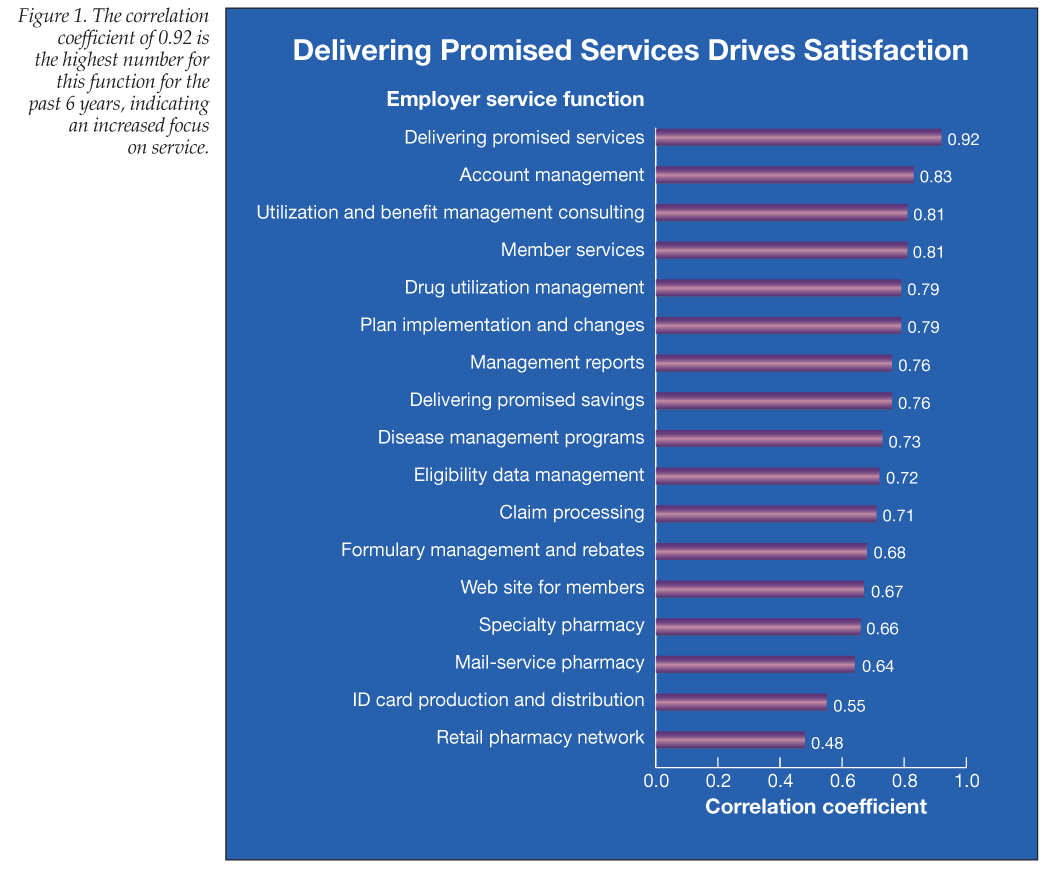PBMs Earn Highest Ratings From Employers
Employers gave their PBMs the highest marks ever for overall service and performance. Satisfaction ratings for 2008 averaged 8 on a 10-point scale, up from 7.9 in 2007 and 7.8 in 2006. PBMs that provided the greatest degree of financial transparency and the most aggressive intervention received the highest satisfaction ratings by employers. More than two-thirds (71.4%) of employers say they are very likely to renew their PBM contract, up from 63% in 2007.
Employers gave their PBMs the highest marks ever for overall service and performance. Satisfaction ratings for 2008 averaged 8 on a 10-point scale, up from 7.9 in 2007 and 7.8 in 2006. PBMs that provided the greatest degree of financial transparency and the most aggressive intervention received the highest satisfaction ratings by employers. More than two-thirds (71.4%) of employers say they are very likely to renew their PBM contract, up from 63% in 2007.
Findings are from the 2008 Pharmacy Benefit Manager Customer Satisfaction Report conducted by the Pharmacy Benefit Management Institute. This 14th annual report includes findings from 275 employers who represent 11.3 million benefit plan members in the United States.

Satisfaction with a PBM’s financial transparency correlated directly with employers’ ratings on overall service and performance, delivering promised savings, and delivering promised services. For overall service and performance, average ratings ranged from 9.1 for those who were extremely satisfied with the extent of financial transparency to 4.7 for those who were extremely dissatisfied (Cover Figure), a difference of 4.4 points. A gap between those who were extremely satisfied with their PBM’s financial transparency and those who were extremely dissatisfied was also seen for the following individual functions: account management (5.5-point difference), utilization and benefit management consulting (4.6), drug utilization management (4.5), disease management programs (4.4), and mail-service pharmacy (4.2). In addition, significantly more employers see their PBMs as completely transparent: 43.3% in 2008, up from 29% in 2007.
Very aggressive intervention by an employer’s PBM was associated with higher satisfaction ratings for overall service and performance, averaging 8.6 versus 7.1 for minimal intervention.
Employers are exerting greater control by contracting directly with PBMs. Seventy percent did so in 2008, up from 66% in 2007 and 59% in 2006. Contracting directly was similarly correlated with a higher average rating for overall service and performance (8.2 vs 7.6 for indirect contracting).

Survey respondents also rated their satisfaction with 18 individual PBM services. The top-rated service is the retail pharmacy network with 9.0, with disease management programs receiving the lowest average rating of 7.2. A correlation analysis was conducted to examine the importance of individual service functions to ratings for overall service and performance. The closer the coefficient is to 1, the stronger the relationship between the variables. Thus, delivering promised services has the greatest impact on overall service and performance, and the retail pharmacy network, although highly rated, has the least impact (Figure 1).
Among individual PBMs, Envision Pharmaceutical Services received the highest average rating by employers of 9.7 (of a possible 10) for overall service and performance, ahead of Express Scripts (8.4) and Catalyst Rx (8.3), which led in 2007 (8.6) and in 2006 (8.4) (Figure 2). Envision also achieved superior ratings for the individual functions of account management (9.7), delivering promised services (9.7), and plan implementation and changes (9.5). Envision’s lowest rating of 8.3 was for disease management programs, although this was well above the 7.2 average for all PBMs.